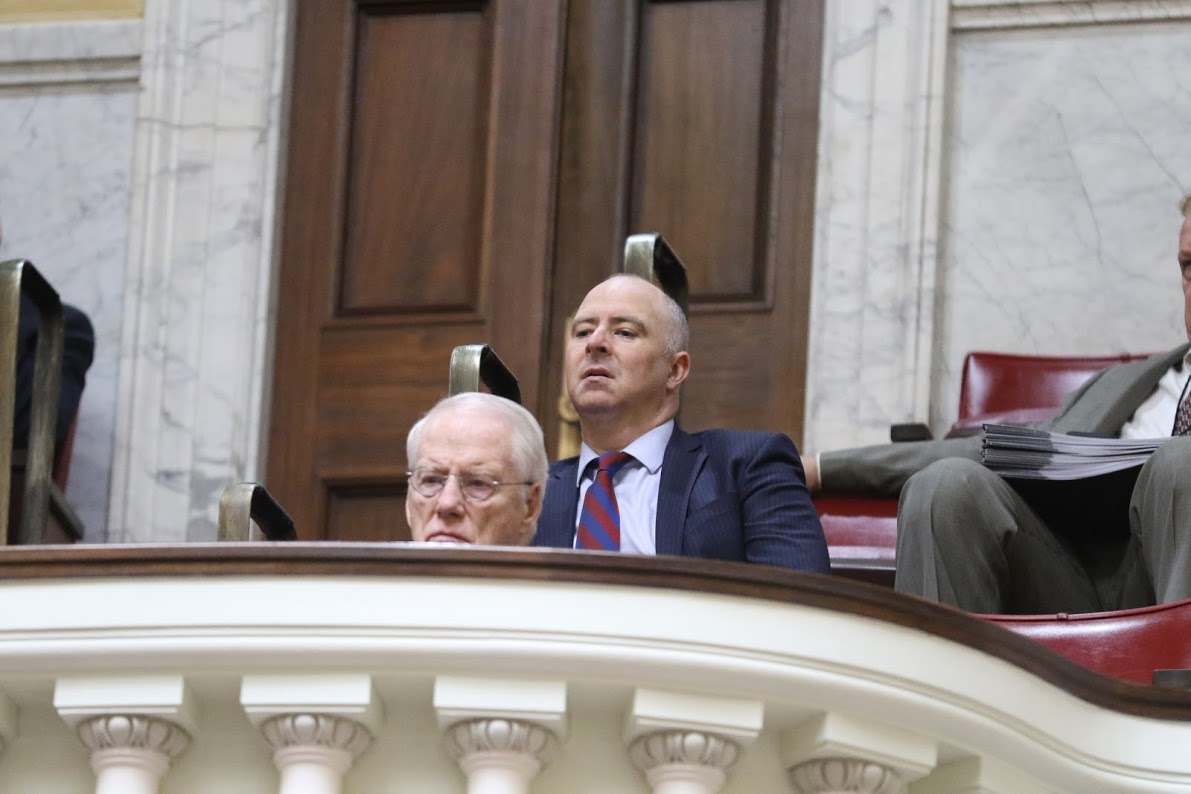By Len Lazarick
Legal but politically stupid. That was the decision last week by the workgroup on school spending to go into closed session to begin hashing out funding formulas. This was a shocker from a commission that has been remarkably open and transparent.
The three-yearlong Kirwan Commission on public education is now in its final stages where the commission is deciding who pays for what in its multi-billion-dollar package of school reform.
This workgroup is technically an informal committee – it includes several people not on the commission, which was created by law, making the full commission itself a public body subject to the Open Meetings Act.
But the workgroup has been acting like a public body. On the commission website, it live-streams its meetings, publishes its working documents and even archives the video of its meetings, as the commission has done consistently. You can even watch the video from Thursday where the workgroup argues about whether to close the meeting. (It starts about 1 hour and 50 minutes in and takes a while to load.)
Hogan Budget Secretary David Brinkley said it was “absurd” that the workgroup was not a public body.
‘Very confusing’
But Commission chair Brit Kirwan said it was very early in the stages in working on the funding formulas.
“We will be putting models out there to see how the formulas would work,” Kirwan said. “I personally think it would be a disservice to the public to see numbers that will have no real meaning. It would be very confusing. … People will get all excited or upset over information that will never come to be.”
All decisions on these formulas will be made in public, Kirwan said.
Harford County Executive Barry Glassman, who also serves as the president of the Maryland Association of Counties, asked if he could take the formulas back to the MACo staff for analysis. He was told no.
So not only was the meeting behind closed doors, the documents that were being discussed were secret.
Alvin Thornton, the chair of the Prince George’s County Board of Education and, more importantly, the man who chaired the last major study of school aid, objected to closing the meeting. He told Luke Broadwater of the Baltimore Sun: “I just thought the issues we had to discuss could be appropriately discussed in front of the people of Maryland. … These are going to be difficult deliberations. But all those things could be discussed in front of the public.”
Sure, people are going to “get all excited and upset.” Reporters at the meeting were going to report on the juiciest and most inflammatory details of the funding – winners and losers, who gets whacked and who gets rewarded.
Public supports more funding
But the context of this discussion is that the public broadly supports increased more funding for public education and Marylanders are even willing to personally pay higher taxes to improve it, despite knowing little about the work of the Kirwan Commission.
That’s the results of a Goucher College poll released Monday. In the poll, 70% of Marylanders say the state spends too little on education, 74% said they were willing to personally pay more taxes to improve public education, and 77% had heard or read nothing about the work of the Kirwan Commission.
So much for the scores of stories written by MarylandReporter.com and others news outlets about the work of the commission.
Kirwan has promised that any decision about the final recommendations to the full commission will be made in public, as will the work of the full commission. These recommendations will also go through an elaborate legislative process and likely fierce debate before they ever reach the governor’s desk.
Given all that, what’s the harm to allow the limited number of people paying attention – like county officials and their taxpayers who will have to foot the bill — to get a full view of how this sausage is being made?




I wonder if the proposed cost ( $ 3.8 BILLION per year and the huge tax increases, for example : 535% property tax increase ) were mentioned in the poll questions ?
Somehow, I don’t think so… For if they were, people would not want any increased spending for “more of the same” regarding student performance and whether they are any better educated than they are now…
New taxes, as a result of $3.8 billion per year for 10 years (or more) of new education spending will drive Seniors out of the state of Maryland!!
Countless academic studies indicate the best path for pinpointing innovations would have been to exhaustively assess how to educate within existing budget constraints. The Kirwan path, in contrast, is one of least resistance within the realm of the state Education monopoly.
Hogan isn’t going to win any fights using process criticisms and half-baked quips. He needs to spend budget resources to propose a literate alternative to Kirwan.